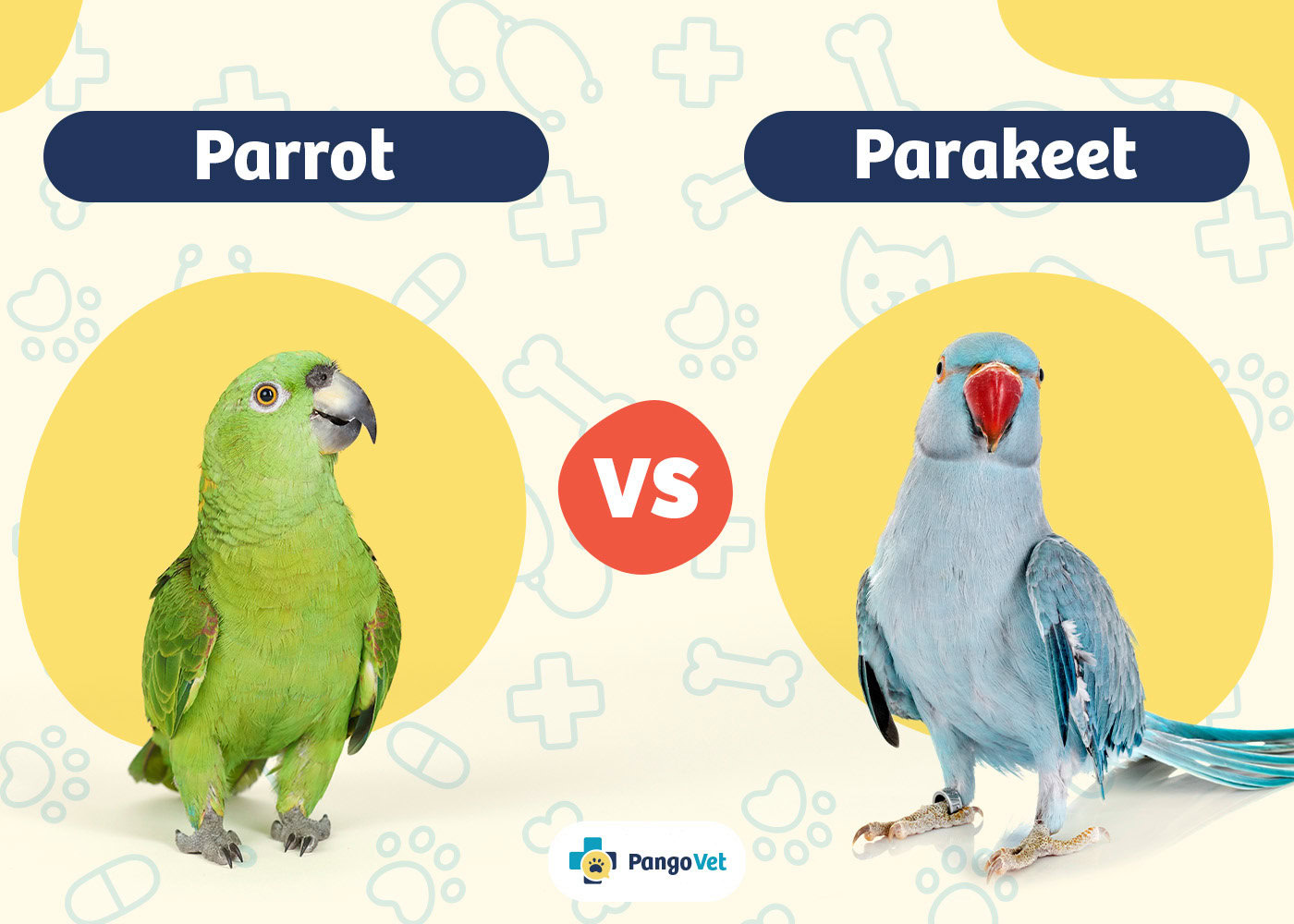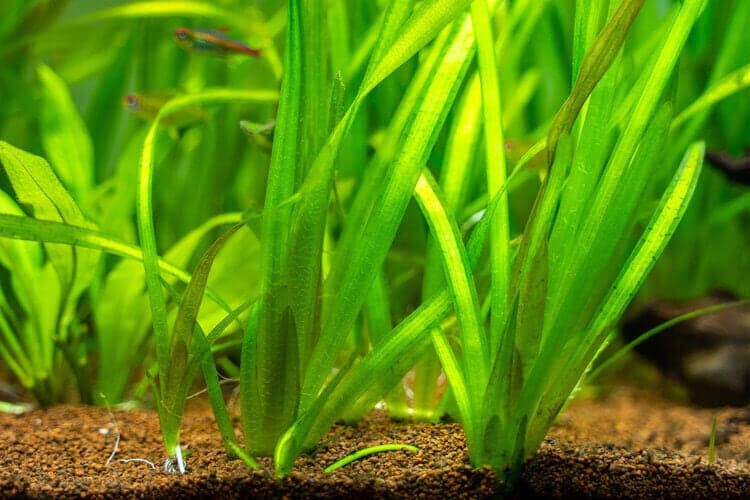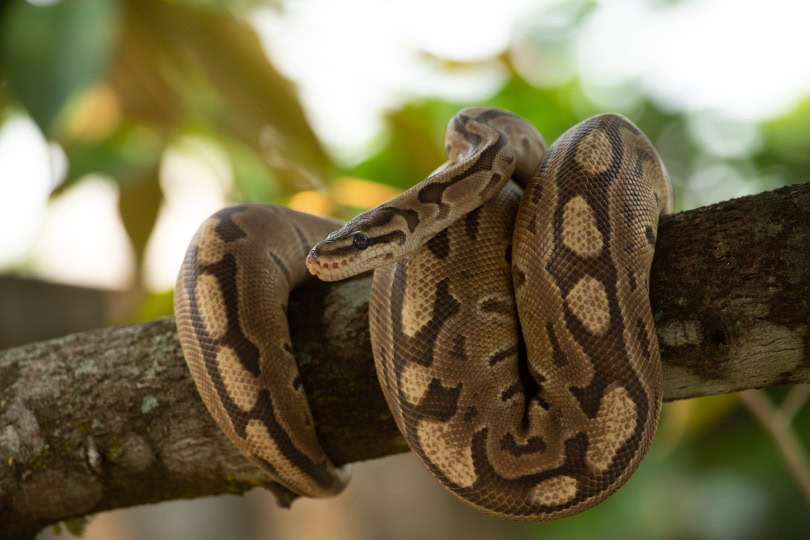Click to Skip Ahead
Parrots are colorful birds (usually) that live in tropical climates and are thought to be one of the most intelligent species of birds. Parakeets are actually a species of parrot that is small to medium in size and are indigenous to Australia.
You probably won’t be terribly surprised to know that there are more differences than there are similarities between the parrot and the parakeet, regarding their size, appearance, and even personality. If you’ve been considering adding a bird to your family but aren’t sure what kind of bird will be the best fit, you’ve come to the right place.

Visual Differences
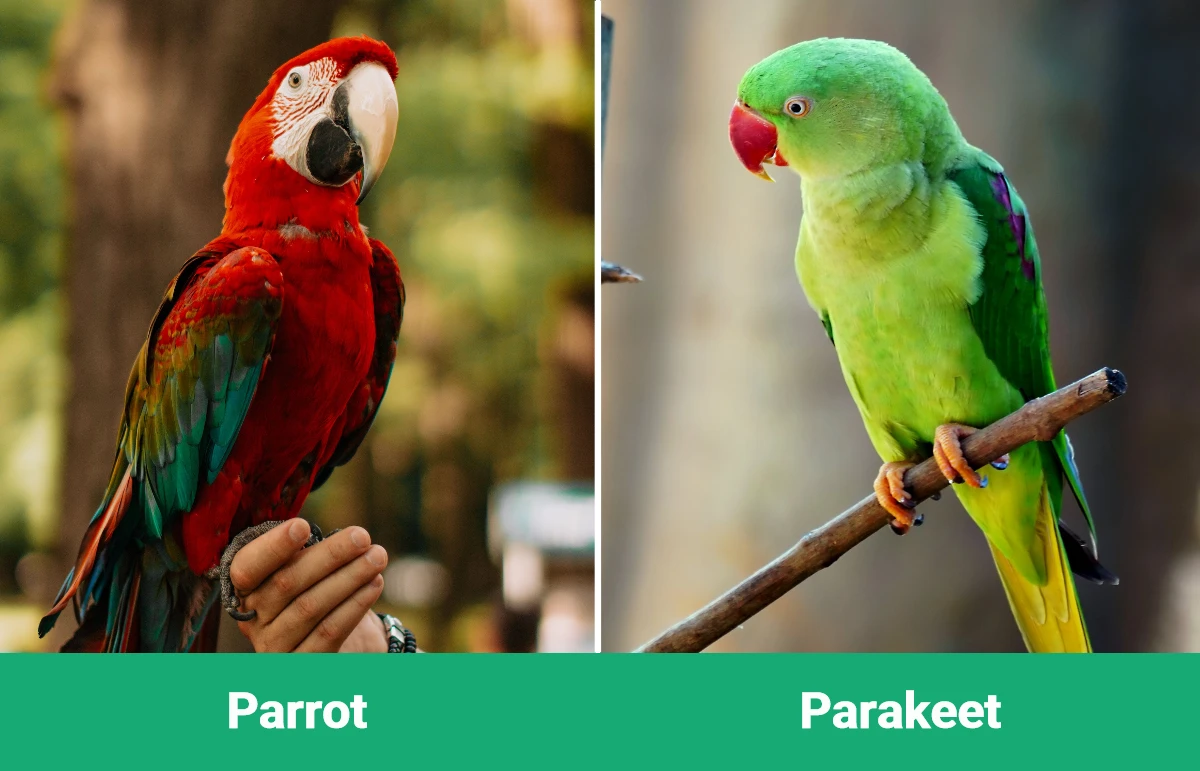
At a Glance
- Average height (adult): 3½–40 inches
- Average weight (adult): 2¼ ounces–3½ pounds
- Lifespan: Up to 80 years
- Exercise: 1+ hours a day
- Grooming needs: Low
- Family-friendly: Yes
- Other pet-friendly: Not often
- Trainability: Intelligent, highly trainable
- Average height (adult): 7 inches
- Average weight (adult): 9–1.4 ounces
- Lifespan: 5–10 years
- Exercise: 1+ hours a day
- Grooming needs: Low
- Family-friendly: Yes
- Other pet-friendly: Not often
- Trainability: Intelligent, very trainable

Parrot Overview
There are approximately 370 different species of parrots living in tropical locations around the world, but they are primarily found in Mexico, Australasia, and South and Central America.
Lorikeets, cockatoos, Amazons, Macaws, and parakeets are parrots. Parrots are classified based on their curved beaks and four toes on each foot, two of which face forward and the other two face backward (this is called zygodactyl). Parrots are most famous for their ability to mimic sounds, particularly human speech.
If you want to purchase a parrot, you can expect to pay anywhere from $50 to $150 for a small parrot (Cockatiels and Lovebirds), $300 to $800 for medium-sized parrots (Conures and Quakers), and $5,000 or more for the larger (e.g., the Macaw and African Grey).
You can also adopt a pet through a parrot rescue, where you might pay $50 up to $1,000 for a parrot, depending on the size and rarity. Adoption is always a great option since the cost is much lower, and you’re giving a parrot a second chance at a better life.
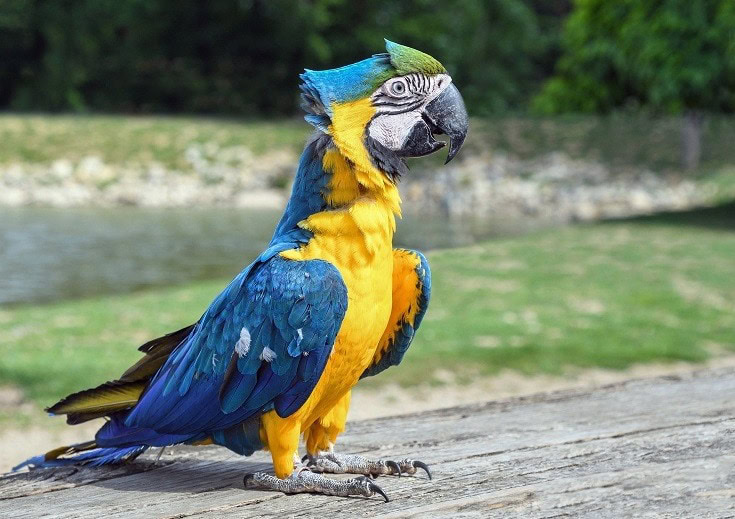
Personality / Character
Parrots have cheeky, mischievous personalities, are playful, intelligent, and can be very energetic. However, this is just a generalization because there are hundreds of species, and each type will have its own unique character. Some parrots are loud and boisterous, and others are quiet and laid back.
The more intelligent the parrot, the more social they are, which requires spending more time and energy interacting with the bird. Almost all parrots are highly social, so be prepared to spend lots of time with them and make them feel like they are a part of the family.
Exercise
There isn’t a set time for exercising your parrot, but it’s vital to allow it to stretch and beat its wings and encourage climbing, walking, and playing. Because parrots are intelligent and sensitive birds, keeping them happy and entertained is absolutely necessary for parrot owners.
Training
Training increases the social interaction between the owner and the bird, which will keep the bird happy and create a stronger bond.
Parrots can learn many tricks similar to most dog tricks, such as fetching and playing dead. Training a parrot takes more patience and will take longer than training a dog, but considering how long they live, you’ll have the time, and it’s worth it.
Health & Care
The parrot’s diet consists mainly of pellets, fruit, vegetables, grains, nuts, and daily snacks such as seeds, berries, bananas, and some greens.
You need to be sure to find an appropriate cage that’s the right size for your parrot and expect to regularly clean it (once a week for general clean and a deep clean once a month).
Grooming is usually taken care of by the parrot, but misting its feathers with a spray bottle and trimming the beak and nails are part of a regular grooming routine. Some parrot owners trim the wings, but depending on your home, it may be unnecessary.
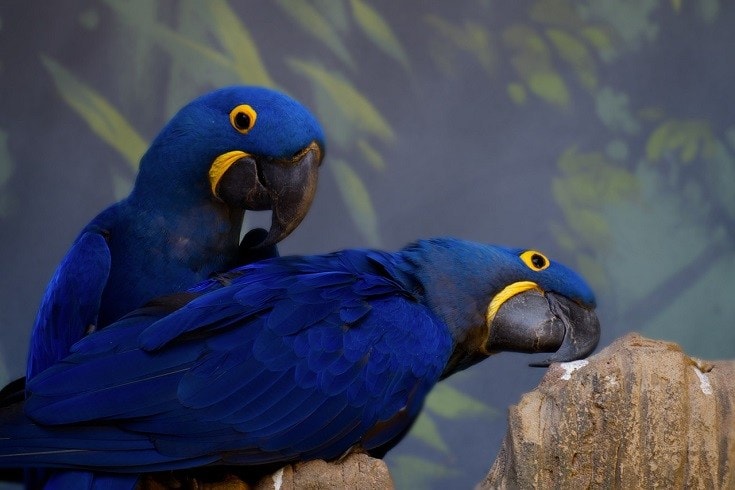
There are several health issues that are species-dependent, but some of the more common problems are:
- Bacterial diseases
- Feather picking
- Internal parasites
- Yeast infections
- Fatty liver disease
- Reproductive disorders
You’ll need to find a vet who specializes in parrots and familiarize yourself with some of the signs of the more common health problems for your species of parrot.
Suitable For:
Because parrots are so diverse, you’ll need to determine which species will suit your household the best. For example, the cockatiel is excellent for families with children and beginner owners, but cockatoos are suited to more experienced owners. Do your homework on the parrot you’re the most drawn to before committing to purchasing one.
You shouldn’t get a parrot if you can’t handle a mess (they are known to be messy eaters), can’t deal with a lot of noise (some parrots are tremendously loud), aren’t able to commit to a pet for as long as 60 years, can’t spend time interacting with the bird, or aren’t able to spend a lot of money (they are expensive to take care of).

Parakeet Overview
Parakeets also go by the commonly known name budgie, short for Budgerigar. In a nutshell, parakeets are also budgies and parrots! As mentioned, parakeets come from Australia and live in colonies of birds in the wild. Their lifespan is 5 to 10 years, but if taken care of well, some parakeets might live as long as 20 years.
These small/medium birds are one of the least expensive of all parrots, so you can expect to spend approximately $20 to $40, but some of the more exotic birds (such as the Plum-Headed Parakeet) will cost more ($800 to $1,000). Finding a parakeet through a rescue group is another option, and the adoption fee costs $25 to $100, depending on the group and the parakeet.
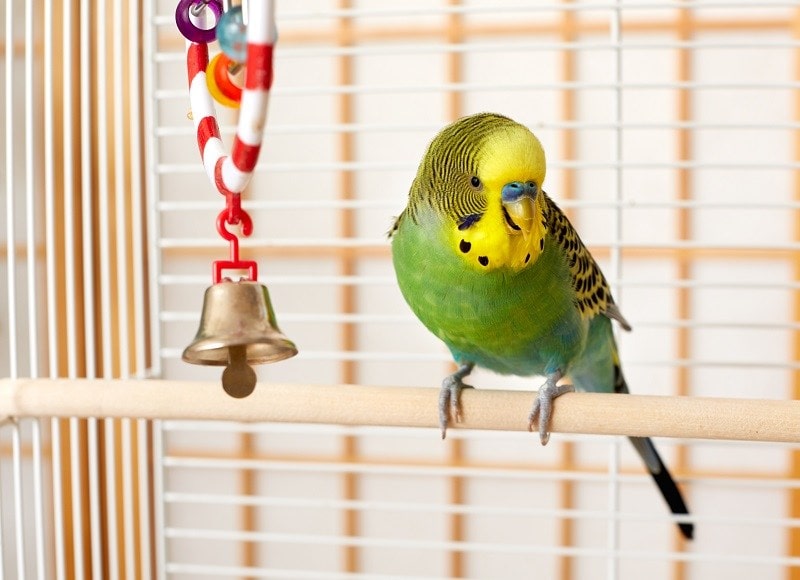
Personality / Character
The Parakeet is a very social bird that will need a companion if you cannot spend enough time with it. They can be loving and devoted pets if you give them the attention and patience they need. Overall, the parakeet is quite gentle but can get riled up if provoked, just like any pet. They are happy, playful little birds that love to chirp and sing, and they have the ability to mimic human speech.
Exercise
The parakeet is a very energetic bird that should be given the opportunity to exercise inside and outside of its cage. Inside, ensure your bird has accessories for perching and climbing, which can also include swings. Before you let your parakeet out, turn off the ceiling fans and close the windows, doors, and cabinets.
Training
You can train the parakeet to do a few tricks, such as playing dead, sitting on your shoulder, and talking. If you want your Parakeet to sleep well at night, you should consistently place a cage cover over the cage every night.
Health & Care
The parakeet diet consists of grains, seeds, fruit, vegetables, and legumes. As a general rule, you should provide your parakeet with about 70% pellets, up to 20% legumes or seeds (for protein), and up to 10% fruit and vegetables.
The cage should be 20” x 20” x 30” at the smallest and for a single bird, and the bar spacing should be no larger than 0.5 inches. Regular cage cleaning is the same as the parrot—light cleaning twice a week and a thorough cleaning typically once a month.
Grooming your parakeet is not much different from grooming a parrot. You can provide a small bowl of lukewarm water so they can bathe themselves or mist them with a spray bottle about twice a week. You’ll also need to keep their nails and beaks trimmed, which can be accomplished by a vet who is experienced with birds.
The health problems that parakeets are prone to include cancerous tumors in their reproductive organs and kidneys, goiters (hypothyroidism or underactive thyroid), psittacosis (parrot fever), obesity (if you feed your parakeet seed as their primary food), which can lead to fatty liver disease, and scaly face/leg mites. If your parakeet seems unwell, you must take it to the vet as soon as possible.
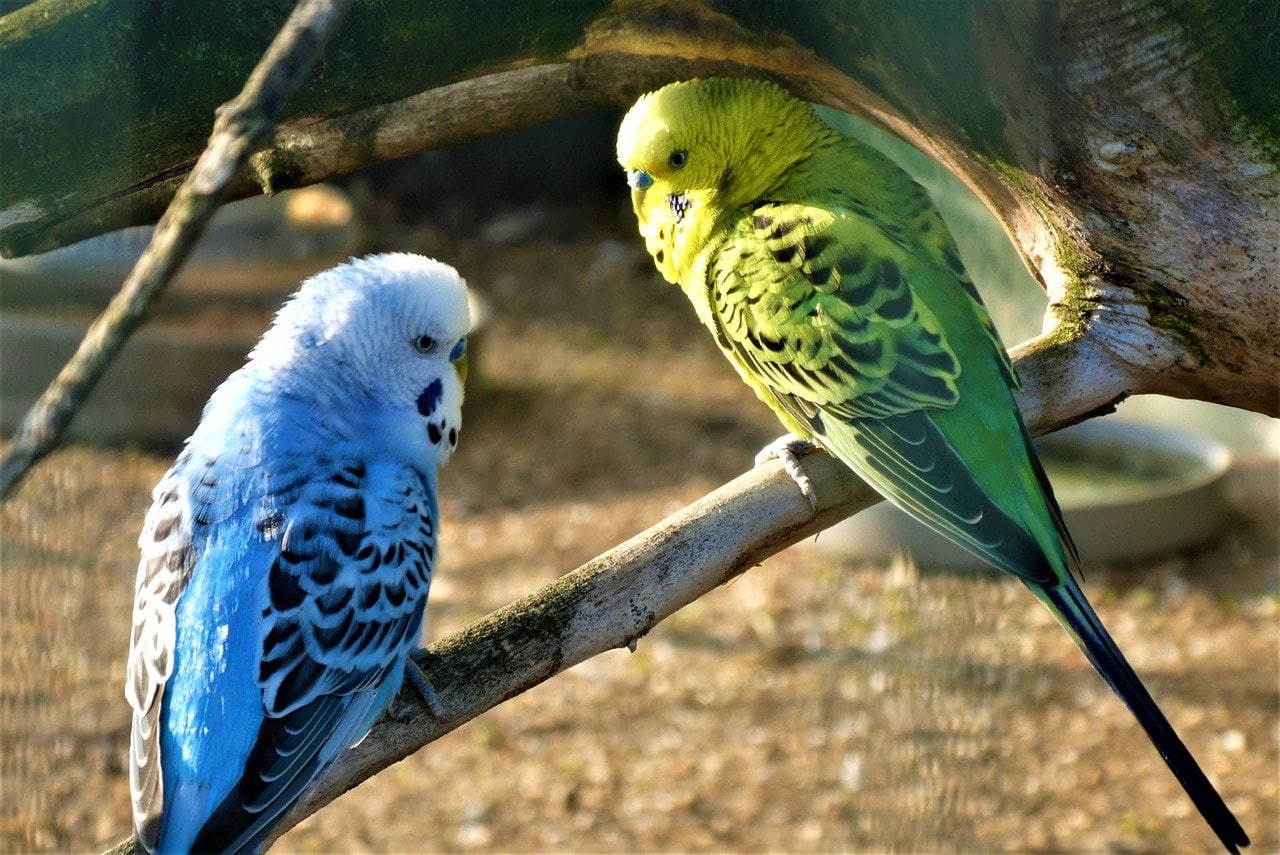
Suitable For:
Parakeets are great for families with children as long as you teach your children how to handle them gently. If your parakeet is young, you should be able to train it and allow it to adjust to your family, particularly if you have other pets. You need to be prepared to spend as much time as possible with them, as they are very social birds. If you cannot give your parakeet enough time, you should buy another one so both can keep each other company.

Which Breed Is Right for You?
Because parakeets are parrots, there are several similarities. Parakeets are smaller than most parrots, but they have the ability to talk and have the same grooming and diet needs. Some parrots won’t be an appropriate bird for the first-time bird owner, but the parakeet makes an excellent beginner bird.
Parrots are generally loud and while parakeets do make a lot of noise, they aren’t quite as loud as the average parrot. The parakeet doesn’t live as long as larger parrots. You need a 10- to 20-year commitment for the parakeet compared to a parrot that might be around for your entire lifetime. Lastly, the larger parrots will need larger cages, and consequently, you’ll need a larger space for them, while parakeets won’t need the same amount of space.
Hopefully, this article has given you a better idea of what kind of bird you want to bring home. Parrots and parakeets have advantages and disadvantages, but they’ll both bring fun and companionship into your home.
Related Read:
Featured Image Credit: Top – Wilbert_Rodriguez, Pixabay | Bottom – Sharath G., Pexels
